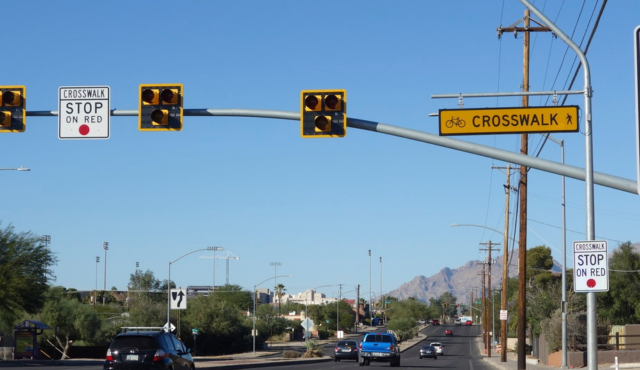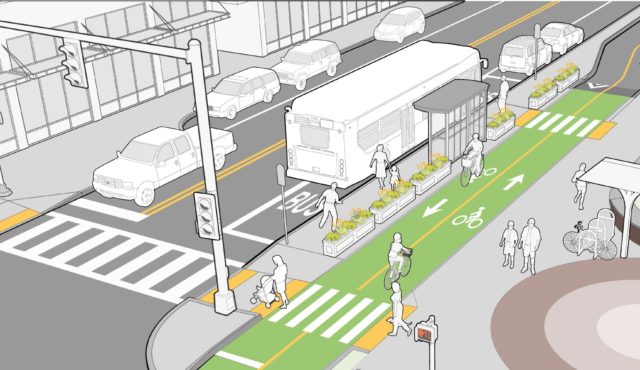On October 3, the United States Department of Transportation (USDOT)’s Federal Transit Administration (FTA) and Federal Highway Administration (FHWA) partnered to release three new resources that further the state of the practice for bicycle and pedestrian access to transit facilities. This inter-agency collaboration is an important step forward in encouraging multimodal transportation networks for communities across the US, and Toole Design Group was proud to be part of the team that helped produce the case study and instructional resources on qualitative data.
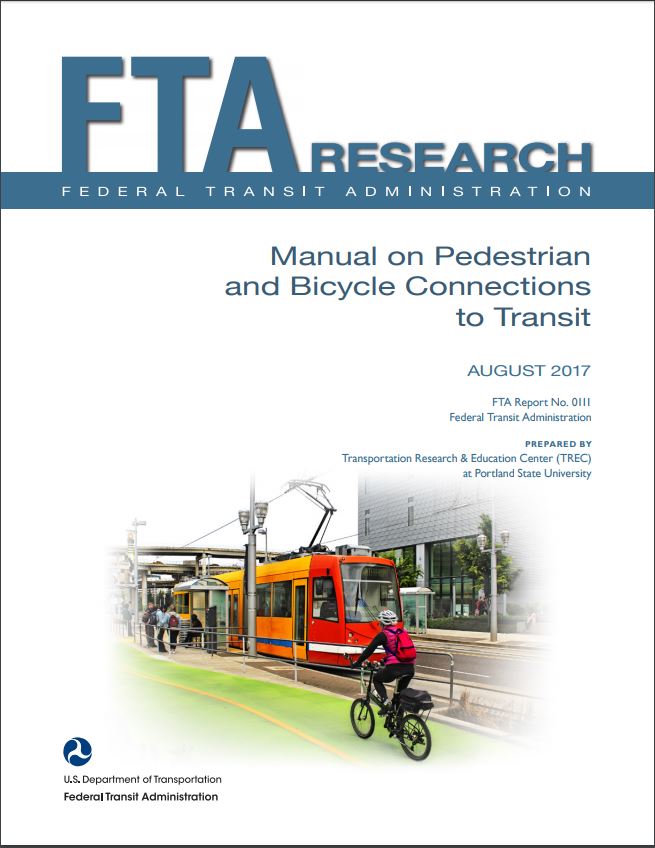 The FTA’s Manual on Pedestrian and Bicycle Connections to Transit is a new national-level resource that highlights best practices for improving pedestrian and bicyclist safety and access to transit. It includes information for transit planners and practitioners on increasing safe, convenient crossings, bike parking, transit bike accommodations and floating bus stops. The document also highlights some related resources from the FHWA. By putting all this information in a comprehensive guide, the FTA provides contextual information for transit agency professionals to expand accessibility for people who walk and bike to get to transit safely and comfortably.
The FTA’s Manual on Pedestrian and Bicycle Connections to Transit is a new national-level resource that highlights best practices for improving pedestrian and bicyclist safety and access to transit. It includes information for transit planners and practitioners on increasing safe, convenient crossings, bike parking, transit bike accommodations and floating bus stops. The document also highlights some related resources from the FHWA. By putting all this information in a comprehensive guide, the FTA provides contextual information for transit agency professionals to expand accessibility for people who walk and bike to get to transit safely and comfortably.
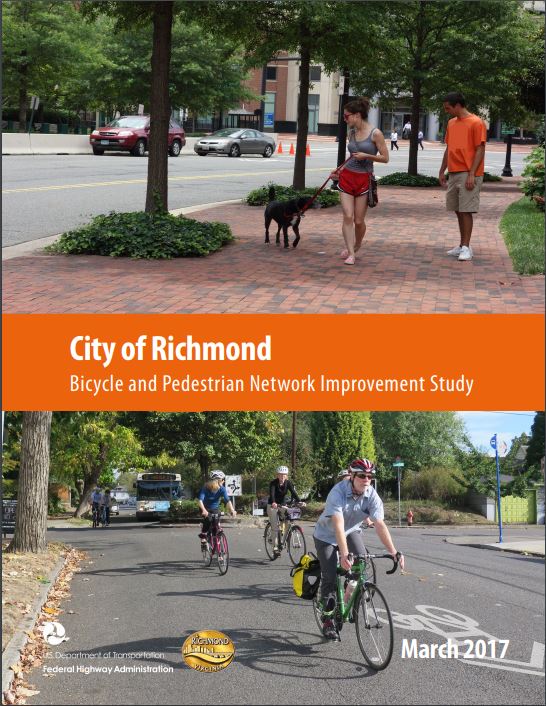 FHWA’s case study, Richmond, Virginia Pedestrian and Bicycle Network Improvement Study, uses the best practices highlighted on FTA’s manual to provide recommendations for increasing transit access in the City of Richmond, VA. Conducted by a team including members of our staff, in partnership with the City of Richmond, the FHWA Virginia Division Office, and the FTA, the study focused on developing bicycle and pedestrian infrastructure recommendations for seven of the 14 new stations from the Greater Richmond Transit Authority’s new Pulse BRT system. The document highlights the project team’s use of innovative technology to create a clear, actionable data set. This work will enhance the effectiveness and future success of Richmond’s BRT system, which was funded under a Transportation Investment Generating Economic Recovery (TIGER) grant.
FHWA’s case study, Richmond, Virginia Pedestrian and Bicycle Network Improvement Study, uses the best practices highlighted on FTA’s manual to provide recommendations for increasing transit access in the City of Richmond, VA. Conducted by a team including members of our staff, in partnership with the City of Richmond, the FHWA Virginia Division Office, and the FTA, the study focused on developing bicycle and pedestrian infrastructure recommendations for seven of the 14 new stations from the Greater Richmond Transit Authority’s new Pulse BRT system. The document highlights the project team’s use of innovative technology to create a clear, actionable data set. This work will enhance the effectiveness and future success of Richmond’s BRT system, which was funded under a Transportation Investment Generating Economic Recovery (TIGER) grant.
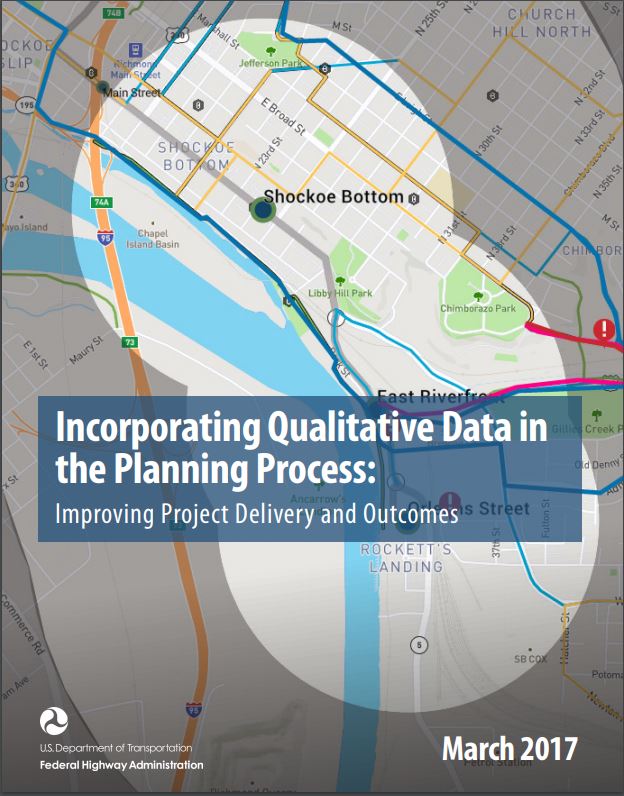 The final resource, Incorporating Qualitative Data in the Planning Process: Improving Project Delivery and Outcomes, highlights the FHWA’s focus on advancing new tools for expanding the public engagement process beyond the traditional public meeting. Featuring several innovative techniques to gather qualitative public input, this resource offers new ways to get stakeholder feedback from communities through a variety of channels, in-person and online. By expanding the tools used to gather stakeholder input on projects, planners and engineers can expand awareness for projects, ensure equitable results, improve project outcomes, and create plans and designs that can be implemented quickly with broad community support.
The final resource, Incorporating Qualitative Data in the Planning Process: Improving Project Delivery and Outcomes, highlights the FHWA’s focus on advancing new tools for expanding the public engagement process beyond the traditional public meeting. Featuring several innovative techniques to gather qualitative public input, this resource offers new ways to get stakeholder feedback from communities through a variety of channels, in-person and online. By expanding the tools used to gather stakeholder input on projects, planners and engineers can expand awareness for projects, ensure equitable results, improve project outcomes, and create plans and designs that can be implemented quickly with broad community support.
The combined release of these new resources represents a significant step for national guidance on the development of multimodal transportation networks that work for all users. By increasing the collaboration across agencies, both local and national organizations can achieve mobility goals through mutually beneficial planning and design projects that increase transportation options for communities across the country.
